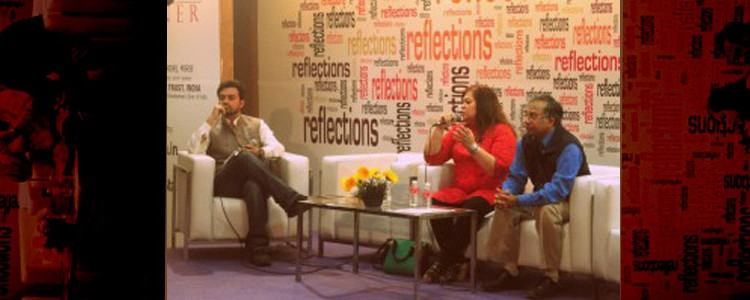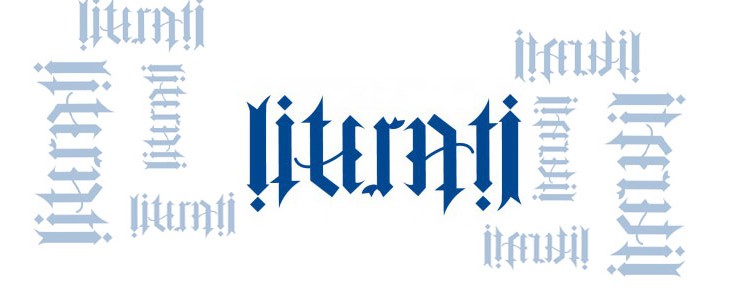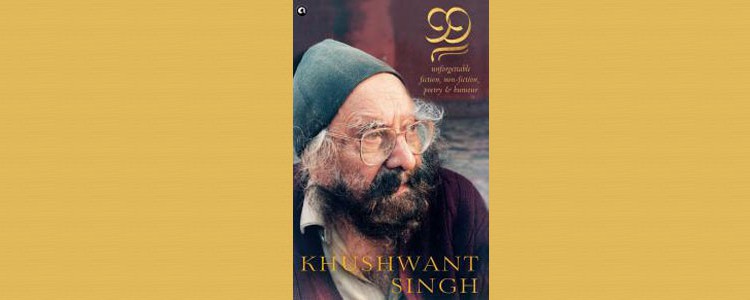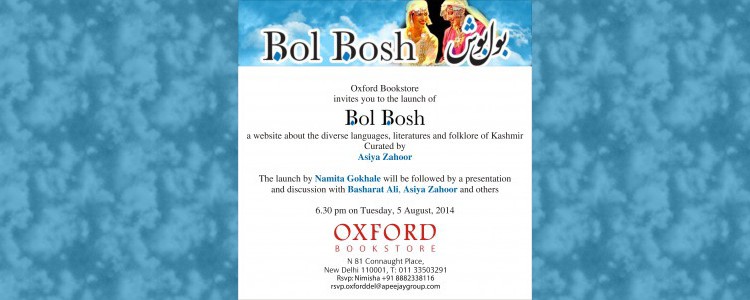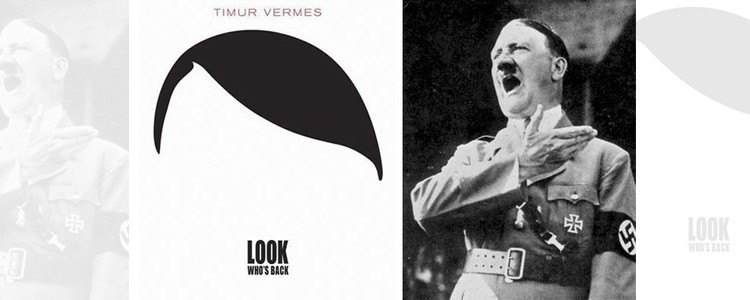Veena Venugopal, “The Mother-in-Law”
( I read Veena Venugopal’s fabulous book, The Mother-in-Law, in one sitting. Instead of posting a review online, I immediately wrote her an email. It was a mad flurry of emails one morning. What follows is an edited version of our conversation. )
Dear Veena,
I finally finished reading your book. Earlier I had only dipped into it. But last night I sat up till well after 1am reading it through.
Fantastic work! Thank you for making these vices public and not making them only the purview of the Saas-Bahu serials.
What stomach-churning experiences you have recounted. What is horrifying is that these are real. You do not intrude into the narrative too much but without having the personal, how can you possibly write something like this? Everyone has a mother-in-law story. I wonder why you only stuck to the arranged marriage route? Unfortunately the 12 stories you include in book only confirm the MIL image as being a dragon, a nasty one at that too. (Bollywood is going to have a gala time using your stories for their films. Think about it.)
I have always maintained that the worst perpetrators of crimes and violence towards women are other women. Also the most manipulative, shrewd, wily and preservers of patriarchal traditions are women. I am not making excuses for men at all but stating a point of view I have evolved. This is after spending years of working in the development sector, with feminist publishing houses, engaging with women’s NGOs, mapping the women’s movement visually etc.
I am absolutely stunned by the impressive work you have done. It must have drained you to be privy to so many conversations, gently teasing out these narratives is not easy. For the reader they read smoothly but did you actually write these essays in one fell swoop? Surely you went back and forth. I ask since traumatised women tend to gloss over a lot of details or create these fictional bridges at the heart of which lies the truth. So to create a clear story as you have done calls upon some sharp journalistic skills and a sensitivity that is commendable. The women you have profiled too are brave to come forth and share their stories.
…
Years ago the newspapers used to carry regular news stories about dowry deaths. At least it kept the conversations about domestic violence alive. People may or may not have been sensitised to it. It resulted in the Domestic Violence Act and much more. But now that DV has been “addressed”, it has been wiped off the news pages, thus silencing a crime that continues to exist. I suspect it is getting worse with the greed for material comforts. I have a theory and I have not tested it as yet. The more our society gains in creature comforts and the middle class is able to show-off its wealth, the women are fast becoming the victims to this new form of imprisonment–birds in a gilded cage. The women are bejewelled, wearing only branded stuff, splurging money on retail therapy, always smiling and available for chit-chat, gossip; ultimately representative in direct proportion to their family’s prosperity. It makes me gasp at times. I flinch internally when women with smiles plastered on their faces tell me “Oh, I am happy all the time”, but scratch the surface and stories come tumbling out. I see how well-educated, professional women have been mocked at by their husbands for pursuing their dreams. …their husbands have thrown money at them and said, stop working for measly amounts. If it is money you want, I will give you more but forget this job. Made the wives quit. Mostly made the women cite the reason of the children and family’s health. It makes me wince since I feel helpless. I do not know what to do about it.
Your book The Mother-in-Law gives a peep into the complicated world these middle class women inhabit. There are constraints that they have to take into account. There is no point in putting the women down for appreciating a bit of material comfort, but at the cost of being shackled to a mind-numbing degrading life baffles me. I am so glad you have written this book. You have made public the daily struggles most women go through to achieve these balances. Thank you for writing this book.
….
What truly saddens me is that these stories never end. It is a vicious cycle.
With warm wishes,
JAYA
Dear Veena,
A short postscript to what I wrote earlier.
I like the fact you kept reiterating that a supportive husband is very essential. Also laying down the ground rules early on in the marriage. If this book of yours can become a handy manual for young women on the threshold of marriage, I would be truly happy. More than that, I suspect it is the women/brides who have to be mentally and physically very strong to prepare for an Indian marriage. I liked it when you said aggressive feminism is here to stay. Unfortunately many young women of today seem to take much of the freedom they relish as “for granted”. They are unable to see the struggles many before them went through to achieve this basic freedom and dignity. Also it is like a mirage. It is there and yet not. It is the daily negotiations that are important to keep that flicker of breathing space available. For that to happen women need to be able to see the injustice and most importantly have a language to articulate it, without going off the handle. If only the grooming and etiquette classes held regularly included a component or two of gender studies/workshops on how to recognise and address silences. Not necessarily make these spaces in the activist mode but in a genteel manner, infused with forceful ideas. Otherwise the women who have signed up for the classes will run a mile!
I may be speaking in a garbled fashion for now but I simply had to send these emails off to you asap.
With warm wishes,
JAYA
PS A supportive and understanding husband is a rarity!
Thank you so much Jaya, it is heartening and encouraging to receive a mail like this from you.
The book was hard to write and I must confess I struggled with the voice right through it. I started my research for the book with Rachna’s story, when she had met Gaurav for the first time. I thought it hilarious, this very Rajinder Nagar mother-in-law taking her under her wing, going on shopping sprees and movie dates. And I assumed all the stories would be like that– a caricature of all the stereotypes of mothers-in-law that one hears about. It shocked me how quickly the stories turned dark. And as the year progressed, I began to worry about Rachna. I remember Copote was annoyed waiting for a verdict on the murderers so he could finish his book. I truly hoped Rachna would dump Gaurav and get out from Auntyjis iron fist even though it would mean that i wouldn’t be able to use her story.
And then I met Deepa and Nikita and Keisha and the stories kept getting worse and worse. Some of them are active on Facebook. Keisha for example is one. And if you saw her profile or read her posts you wouldn’t believe that she lived that life. I was very, very disturbed after meeting Keisha. And eventually came Arti and I couldn’t sleep for a week. Her story is the worst. And the strangest thing was how easy it was to find these stories.
The interviews themselves were spread over a period of time. I would ask them the same question in various different ways. I would point out inconsistencies in their telling of an incident. It was hard to ascertain the authenticity of their stories. I am sure if I spoke to their mothers-in-law I would have got their side of the story, but no one would have been honest knowing fully well that I had a channel of communication to their MIL. (Most of the stories were love marriages in fact. Only Lalitha, Arti and Rachna’s were arranged.)
I agree with you about violence in families. It is during the research for the book that I began to start railing against the term “fabric of Indian society”. Arun Jaitley used it a lot in keeping marital rape outside of the new rape law. The fabric of Indian society is a soiled rag, sadly, and I see no reason why it should be preserved. It is appalling the kind of abuse people take. With Keisha especially I kept wondering why. It is, I suppose, easy to be an uninvested third party and see clearly that she should have got out long ago. But she felt a certain urge to not worry her aunt, her grandmother. And I suppose because of the fact that her aunt didn’t marry in order to look after Keisha, she feels that love is necessarily an unconditional sacrifice. I see her now, she is the first to “Like” any post about the book. She was desperate to get copies of it. I think for her participating in the book was her final retribution. She gets a great degree of joy from the fact that her story is out there.
… I think I should use the book to build a community of daughters-in-law – give them a place to vent. At the end of the day, that’s what most people want – a forum where they don’t have to pretend that everything is hunky dory in their family. I just worry that i don’t have the bandwidth to run that along with my job. Like you said, these stories never end, and if just talking about it makes people temper their future behaviour, then it should be worth squeezing some time out for…Let’s see.
The ideal husband is a rarity, I know, but I’m hoping there are more mothers out there raising some than there were in the past.
…
Warmly
Veena
Dear Veena,
Do you realise that your interest in putting together a forum for women is to step into a vacuum left by many women organisations drifting away from this focus? It has been now over a decade but fewer and fewer women NGOs maintain helplines. The time required to listen and counsel victims/women and their community is a mind-numbing and thankless task. Also it is not recognised as a crucial need. I guess more of a social service. So there is no funding available for these activities. Your idea is a good one …Just remember to think this through. Helping women or any individual should not be a lifetime crutch, but a brief sounding board to help them address their challenges and to face the world. Otherwise you will be an emotional wreck.
I am not surprised at Keisha “liking” Facebook posts abt the book. There are many women who are in a much messed-up space. Sometimes, and I do not know if this makes me a coward, I simply do not want to know. The horrifying stories one sees more than hears is very depressing. I used the word “sees” advisedly. Many times you see these women trotting about all dolled up, but observe carefully and you will see the chinks. Try telling me that a slim gym-going figure, well-groomed, well-dressed young mother, carrying a new born infant in her arms and doing the school run with the older kid has not been put through pressure to look respectable to the outside world. It worries me about the women and for their children. And these are the middle class and nouveau riche I am talking about. It is equally worse for women of other socio-economic strata. I am not generalising.
Women’s movements have really painted women into a corner. It is only a clutch of women who can speak with confidence about injustices they experience or perceive. Others now have this dual burden of being a professional and efficient at home. This is where I feel your book is showing the chinks. Look at the amount of stress these women are subjected to?
…..
With warm wishes,
Jaya
Veena Venugopal The Mother-in-Law: The Other Woman in Your Marriage. Penguin Books India, New Delhi, 2014. Pb. Pp. 264 Rs. 299.



